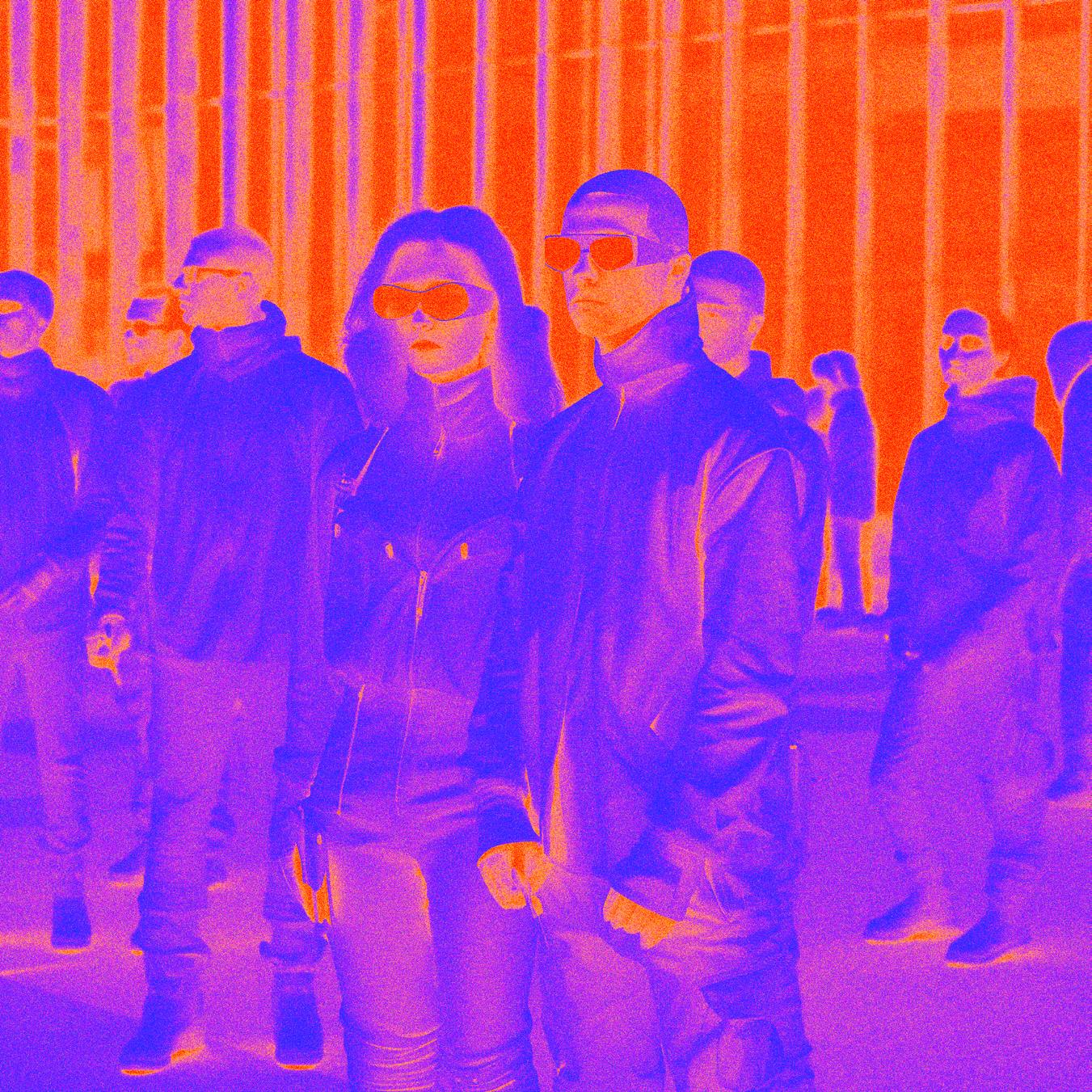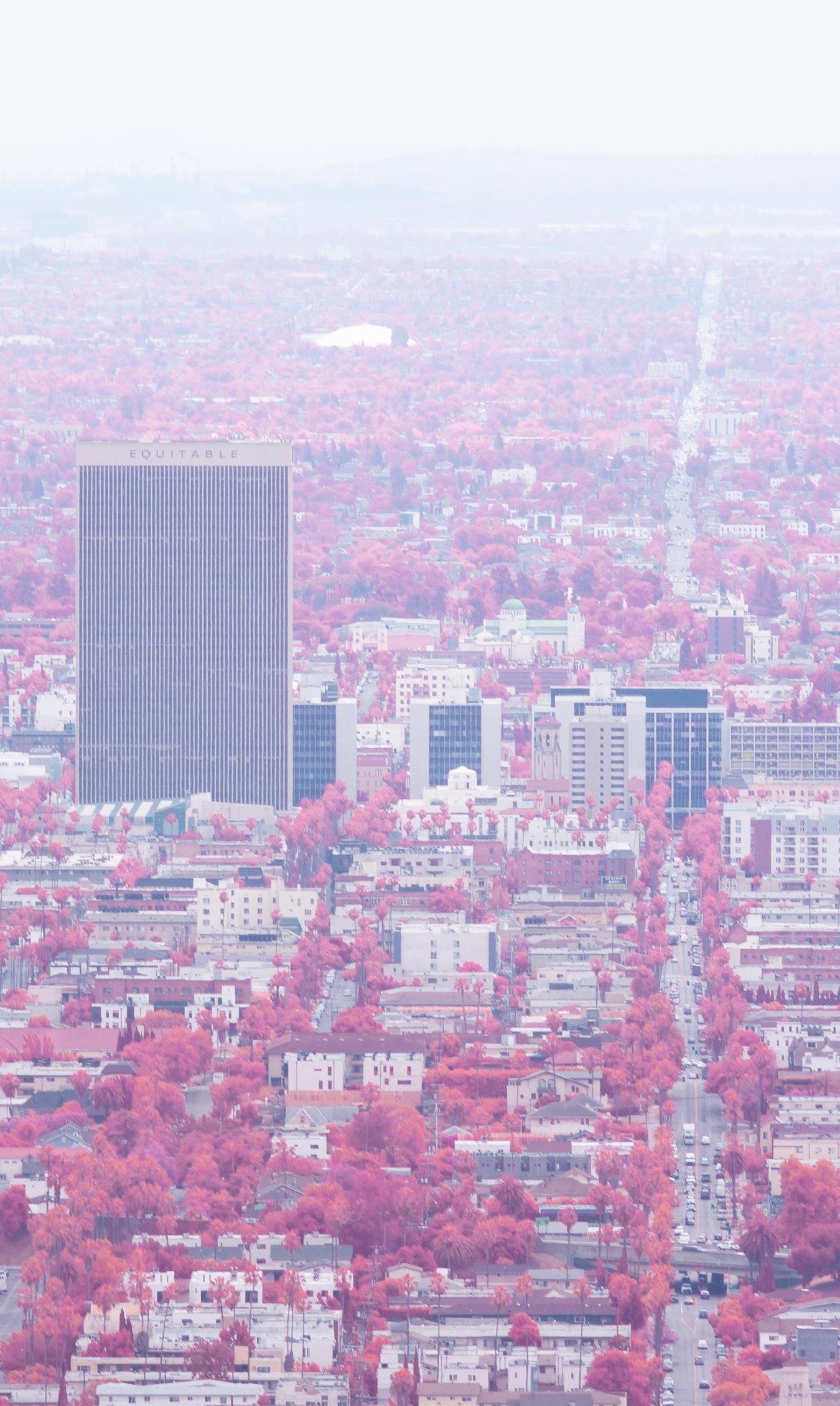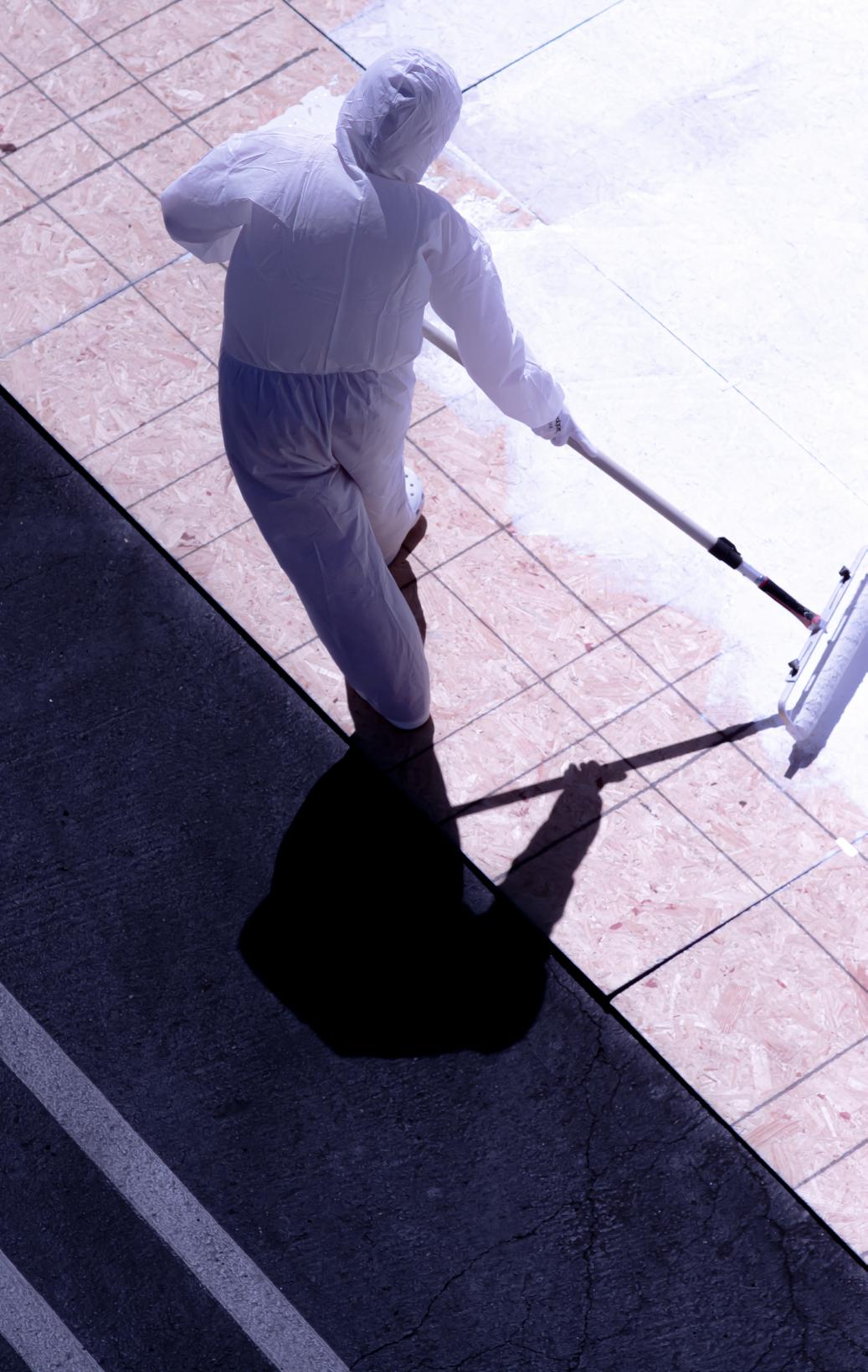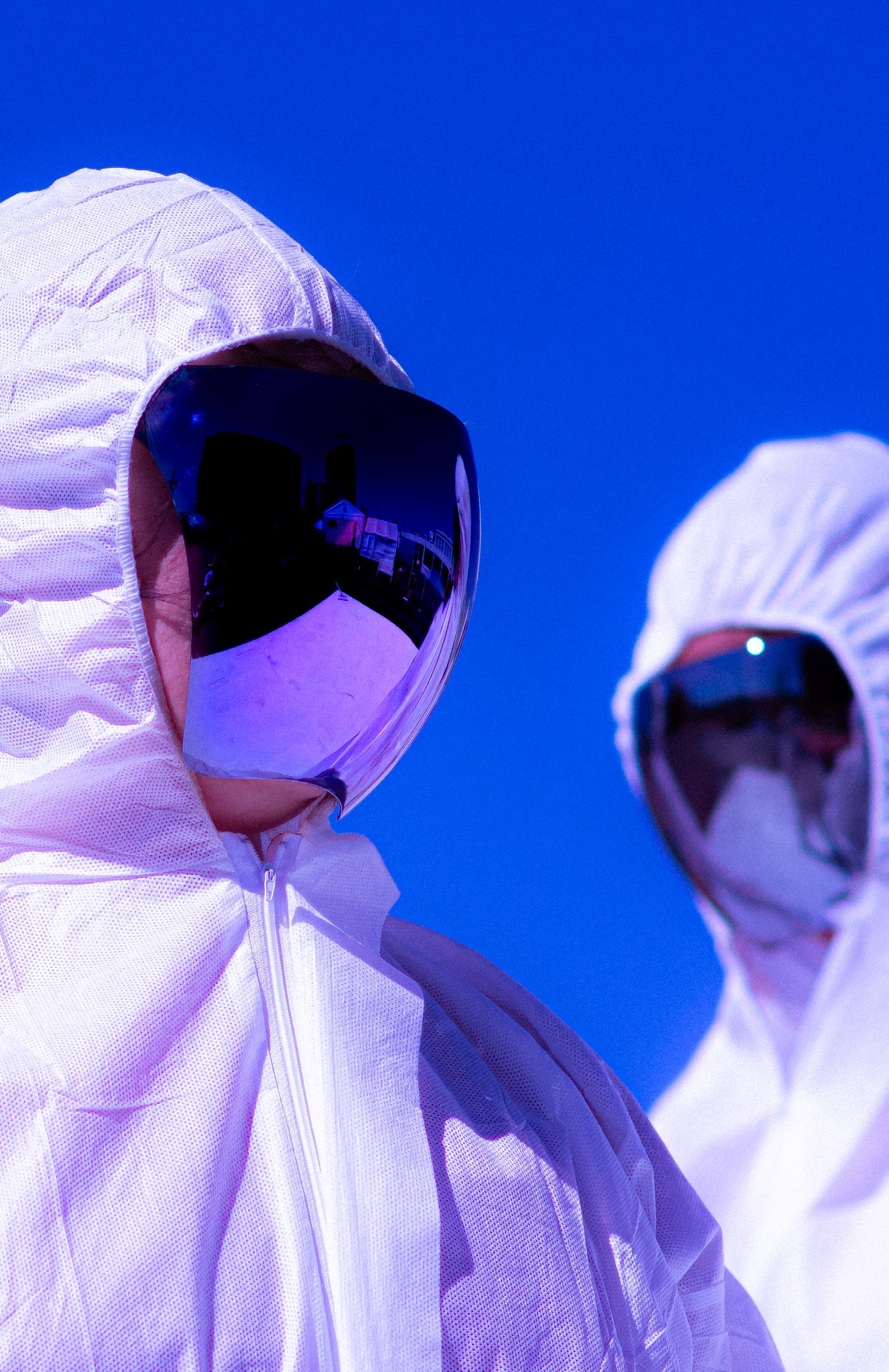I SEE THE SUBLIME IN YOU
 JACK LONDON FREEDMAN
JACK LONDON FREEDMAN

 JACK LONDON FREEDMAN
JACK LONDON FREEDMAN



thesis takes on big concepts, ideologies, and phenomena in every sense, and without the benefit of contexts and introductions, I don’t think a fifteenminute presentation is enough to adequately discuss the process, production, passion, and promise of my graduate architecture thesis project titled,
“I SEE THE SUBLIME IN YOU”
At its core, this project is about reevaluating an aesthetic phenomenon (the sublime) by exploring a possible case for a novel sublime: an architectural phenomenon (geoengineering).
This is a valuable exercise for two (hopefully more) reasons: it destigmatizes and democratizes both sublimity and geoengineering. By framing this novel sublime as “less” than infinite, “less” than a god-like thing, and more grounded in objects and moments we can see, touch, and even make, it pulls back the curtain on the historical sublime, revealing a human-made vision of its own reflection. And when this is viewed through the lens of geoengineering, the act of (in this thesis’ case) painting a city’s rooftops white in order to cool the atmosphere, reduce embodied carbon, building and air conditioning costs, and effectively reduce our impact on the planet becomes less political and more beautiful.
Throughout the course of this project, I worked in the following media:
Color Digital Photography
Infrared Digital Photography
Ultraviolet Digital Photography
Aerial Photography
Aerial Videography
Color Digital Videography
Infrared Digital Videography
Artificial Intelligence-Based Videography
Artificial Intelligence-Based Image Making
Artificial Intelligence-Based Sound Design
Songwriting
Woodworking
3D Printing
House Painting
Truck Driving
Geoengineering
Architectural Design
Dancing


“THROUGH OUR EYES, THE UNIVERSE IS PERCEIVING ITSELF”
Alan Watts
The title of this thesis was “untitled” for a long time. Mostly because I did not want to call it “towards a new sublime.”
The title “I See the Sublime in You,” finally came to me as I was in the midst of an existential crisis, asking myself why I was doing any of what I was doing. My project felt pessimistic, too serious, and not what I wanted to contribute to the world of design. It was at that time and in that head-space that my advisor and trusted partner in this project, Elena, reminded me that this project was not any of the things I was worried about it being, for no reason other than it was my project. She was reading the project in all of the ways I was hoping for it to be read, because at the end of the day, theses are reflections of students, and I am an optimistic person who chooses to see beauty and positivity and opportunity where some people may see hopelessness and negativity. So the title of this project acts as a reminder, and as a way of helping people to see through my eyes.
The subtitle for this thesis has also changed many times over the past year. For a long time it was “A dance about geoengineering to the rhythm of the sublime” which comes from a quote I was introduced to by the indomitable Timothy Morton, which plainly states, “ writing about music is like dancing about architecture.” This points to the seemingly fraught nature of mixing creative endeavors with the hopes of describing or uncovering novel parts of either. But to Tim, and to me, this encapsulates the necessary act of slowing down, seeing things in new ways, and bringing novel perspectives to architectural discourses.
The subtitle now is a bit more pragmatic but maintains some of the humor characteristic of my design praxis. This project is, in fact, the end of the beginning. It is also, in fact, the beginning of the end. It is my academic capstone, a culmination of over 20 years of school, most of which I could categorize as “architecture” school in one way or another. It is also the beginning of the end not just of my life, but of the world as we know it. We find ourselves in a time of reckoning, a cultural awakening as it were, as we are just now seeing the effect we have on global ecological systems. The world we knew is ending, and this thesis aims to start conversations about what that looks like, feels like, and behaves like.
ROBERT ROSENBLUM THE ABSTRACT SUBLIME 1961
HENRI MICHAUX TO DRAW THE FLOW OF TIME 1948
ARTHUR SCHOPENHAUER THE WORLD AS WILL AND REPRESENTATION 1819
ETIENNE-LOUIS BOULLEE CENOTAPH FOR NEWTON 1784
EDMUND BURKE
A PHILOSOPHICAL ENQUIRY... 1757
LONGINUS DU SUBLIME 1674
CLAUDE LORRAIN LANDSCAPE WITH PSYCHE... 1664
CLASSICAL ERA
THOMAS COLE THE OXBOW 1836
JOHN ROEBLING THE BROOKLYN BRIDGE 1883
J.W.M. TURNER PEACE - BURIAL AT SEA 1842
FRIEDRICH HEGEL ...ON THE PHILOSOPHY OF RELIGION 1827
FRIEDRICH NIETZSCHE THE BIRTH OF TRAGEDY 1872
IMMANUEL KANT CRITIQUE OF JUDGEMENT 1790
FRIEDRICH SCHILLER ON THE SUBLIME 1801
ROMANTIC ERA
JACQUES
JACKSON POLLOCK MURAL 1943
YVES KLEIN TRUTH BECOMES REALITY 1961 INTERVIEW
THE SUBLIME
ALBERT BIERSTADT SUNRISE ON THE MATTERHORN 1885
JEAN-FRANCOIA THE SUBLIME AND INTERVIEW
IN CONVERSATION
THE SUBLIME
WALTER SOME FACTS, GUSTAV METZGER AUTO-DESTRUCTIVE ART 1960
MICHAEL HEIZER DOUBLE NEGATIVE BARNETT NEWMAN THE SUBLIME IS NOW 1948
GERARD RICHTER STATEMENT
GOTHIC ERA
JEAN-FRANCOIA LYOTARD AND THE AVANT-GARDE 1988
JEAN FISHER THE ECHOES OF ENCHANTMENT 1996
JACQUES DERRIDA PARERGON 1978 SHIRAZEH HOUSHIARY INTERVIEW WITH SANTACATTERINA 1994
HEIZER NEGATIVE 1969
SLAVOJ ZIZEK SUBLIME OBJECT OF IDEOLOGY 1989
WALTER DE MARIA NOTES, DATA... 1980
DOREET LEVITTE HARTEN CREATING HEAVEN 1999
JACQUES RANCIERE THE AESTHETIC REVOLUTION... 2007
OLAFUR ELIASSON THE WEATHER PROJECT 2003
LAWRENCE RINDER TUYMANS' TERROR 1997
MIKE KELLEY CONVERSATION WITH THOMAS MCEVILLEY 1992
JEAN-LUC NANCY SUBLIME OFFERING 1988
MARINA ABRAMOVIC STATEMENTS 1992
ANISH KAPOOR INTERVIEW WITH ALLTHORPE-GUYTON 1990
RICHTER STATEMENT 1973
A.K. DOLVEN A FOUND PAGE 2004
ELEANOR HEARTNEY BECOMING THE BODY 2008
OKWUI ENWEZOR THE AMERICAN SUBLIME AND THE RACIAL SELF 2006
LUCE IRIGARAY BELIEF ITSELF 2002
BILL VIOLA THE DELUGE 2002
LYNN M. HERBERT SPIRIT AND LIGHT... 1998
BARBARA CLAIRE FREEMAN THE FEMININE SUBLIME 1995
GENE RAY
JOSEPH BEUYS AND THE AFTER-AUSCHWITZ SUBLIME 2001
MODERN ERA
LIAM YOUNG PLANET CITY 2020
TIMOTHY MORTON HYPEROBJECTS 2013
PHILIP SHAW LACAN SUBLIMITY AND SUBLIMATION 2007
MARCO BELPOLITI MEMORY OF OBLIVION 2006
JAMES TURRELL RODEN CRATER 2024
CHARLES ROSS STAR AXIS 2025
POST-CONTEMPORARY ERA ??? ERA

One of the foundational assumptions this project operates within has to do with the historical contexts of what the sublime is and how it has been used. Throughout the history of the sublime, it has been used to evoke the “infinite,” whether that be a vision of a god, the incalculable vastness of the ocean or a mountain range, or the unknowable complexities of the human consciousness. In order to even begin to talk about a sublime within architecture, one that can be built and can be formed, rather than update the ‘feel’ of the sublime, we can update our understanding of what ‘infinite’ actually entails.
Luckily for me, this work has already been done by 19th century mathematician Georg Cantor. He, too, was interested in reframing the idea of infinity, and through his work in transfinite set theory, was able to argue that infinity is not a static, uncountable vestige of god, but rather a fungible, flexible value that spans many scales.
In my discussions with Graham Harman, he eloquently explained transfinite mathematics as the fact that there are infinite ways to describe the glasses on our faces, just as there are infinite ways to describe the universe. Infinity exists at different scales. Mathematically, Cantor was able to show this by using two infinite sets: the set of all integers (1,2,3...) and a set of real numbers (1, 1.001, 1.002, 1.003,...). Even though the set of integers is infinite, the set of real numbers between 1 and 2 is also infinite, making that set infinitely larger than an already infinite set.
So, if we can assume infinity can exist at infinite scales, so too can the sublime.
The second fundamental assumption I’m working under is that we as a global community are willing to change our behaviors to make impactful positive change on our world. I’m hoping the end of the world is enough to encourage those with power to make structural changes that would benefit those with less. This is not a change that has happened yet it would seem, as humans still extract from the earth at an exponential rate, and still pollute the water and the air at the highest rate in recorded history.
But change must happen. Or rather, change will happen, whether we are ready for it or not. My hope is this change will be an active one on humanities behalf, and it will bring a sense of beauty and passion and optimism to global communities.
Having continuing discussions about the sublime beauty of climate remediation must have a positive impact on our relationship to the planet, slowly but surely depolarizing an issue that ought not to have been polarized in the first place.
Those opposed to geoengineering should realize the following: we - as a species - have been geoengineering for over three centuries. Geoengineering has taken the form of destructive and extractive industrialization from the first industrial revolution, and it’s long overdue we recognize that and move on to a more positive and reconciliatory form of geoengineering.
This thesis explores Ground-Based Albedo Modification in metropolitan Hong Kong, but this method is comparatively non-invasive. There are upwards of fifty methods of geoengineering being researched around the world at this very moment, and hopefully this research grows and evolves into global-scale sublime action.


The aesthetic-cultural concept of the sublime is a phenomenon predicated on the time and place in which it is being invoked. 18th century idealism, 19th century romanticism, and 20th century deconstructivism each made use of the sublime to ponder a higher power, the limits of reality, the borders of consciousness, and the relationship humans and non-humans have to each other and the worlds around them. These are invaluable thought processes, and yet we are living in a time of exponential change, one of urbanization, reconciliation, and devastation. The sublime in the 21st century and beyond doesn’t look like that of previous generations, and it can be brought into focus at the site and scale of geoengineering. Here, ecologies of climate remediation and the sublime are reciprocal: just as metropolitan albedo modification points to a novel architectural sublime, this sublime can allow us to rethink geoengineering and ecological justice.
This novel architectural sublime interrogates the 18th century idea of scale, working within transfinite set theory - a mathematical way to describe the fact that there are infinite ways to describe a grain of sand just as there are infinite ways to describe our galaxy - to redefine the value of the infinite, the limitless, and the uncountable. Instead, this thesis highlights the sublimity of the countable, the microscopic, and the human.
This novel architectural sublime begs the question, ‘what
does it mean to construct the sublime?’ The 19th century transcendentalist anthology speaks to the essence of the sublime object and the sublime moment, but comes up short of implicating the built environment in this experience. This thesis posits that the collection of sublime objects and moments includes those in the built environment, and while not common, certainly manifest in the act of geoengineering.
This novel architectural sublime is an expression of time, collapsing the entire 20th century of exponential and malignant industrialization into the act of erasing it. The sublime ritual of geoengineering, then, is clear: one person, two people, four people, intervening, adding, and manipulating an architectural moment as a reflection of all the moments before it, in an effort to change the fate of the entire planet. This is an optimistic act, an opportunistic act, and a sublime act.
I See The Sublime In You explores the complex history of the aesthetic sublime, and through the lens of geoengineering, specifically the act of a ground-based albedo modification project in metropolitan Hong Kong, makes the case for a novel architectural sublime. I hope to foster ongoing discussions about the implication of the construction of the sublime, and how the positive performative rituals of climate remediation aim to erase centuries of neglectful, naïve, and negative industrialization.








Many of the early images made for this project were created using some form of Artificial Intelligence platform or tool. They got me to a certain point in the process - brought me a certain level of inspiration and awareness - but can not fully capture what my cameras could moving forward.
While AI has the capability to ‘image things that are seemingly unimaginable,’ what this project has done in many forms (without AI) is ‘show what cannot be seen’ whether through extra-spectral photography or timestretching videography.
The following images are all live-action film stills, architectural model photos, or portraits taken with infrared, ultraviolet, and traditional digital cameras, and are artifacts left over from the videography of the project. I enjoyed pushing myself creatively throughout this process, and directing a performance art piece to speak to the
sublime ritual of geoengineering was a powerful moment for me.






























The performance was a simple one. Four people in solarreflective suits painted two-thousand square feet of three-eights inch thick oriented strand board with white paint.
The white-painted surface reduced the ground temperature on an August Los Angeles afternoon by up to fifty degrees Fahrenheit. The parking lot asphalt reached temperatures of 150 degrees and the white surface didn’t get over 110, and was down to 95 degrees in places.
The science is not on trial here. It works, and it should be implemented as soon as possible.
I included stencils in the installation of the thesis, they read the following:
“IRONY IS THE ACTIVE INGREDIENT IN THE SUBLIME”
“LIFE IS A BEAUTIFUL ACCIDENT”
“ONE BRUSHSTROKE VERSUS THREE CENTURIES”
“WHAT DOES IT MEAN TO CONSTRUCT THE SUBLIME?”
“WHAT IS AN ARCHITECT TO DO?”
“I SEE THE SUBLIME IN YOU”

THANK YOU TO EVERYONE INVOLVED WITH THIS PROJECT, I ABSOLUTELY COULD NOT HAVE DONE IT WITHOUT YOU, BUT MORE SPECIFICALLY:
Thank you Mom and Dad, for being everything, everywhere, all at once.
Thank you SCI-Arc, for giving me the space to push myself beyond what I thought was possible or reasonable.
Thank you Evelyn, Hiwot, Ruth Blair, and Trey, for melting on my behalf.
Thank you Juan, for inspiring me with music.
Thank you Kolari Vision and FLIR, for helping my cameras to see the unseen.
Thank you LA Camera Rentals, for giving me the right tools for the job.
Thank you Kelly and Ben, for being my third through sixth arms.
Thank you Jasmine and Erik, for being my second and third brains.
Thank you Tim, Graham, Jeremy, Will, and Roto, for inspiring me with conversations.
Thank you Emil, David, and Gabriel for helping me fly.
Thank you Rodney, Nick, and Mariner for keeping me grounded.
Thank you Jennifer, for geoengineering with me. and Thank you Elena, for putting up with me.


“I SEE THE SUBLIME IN YOU”